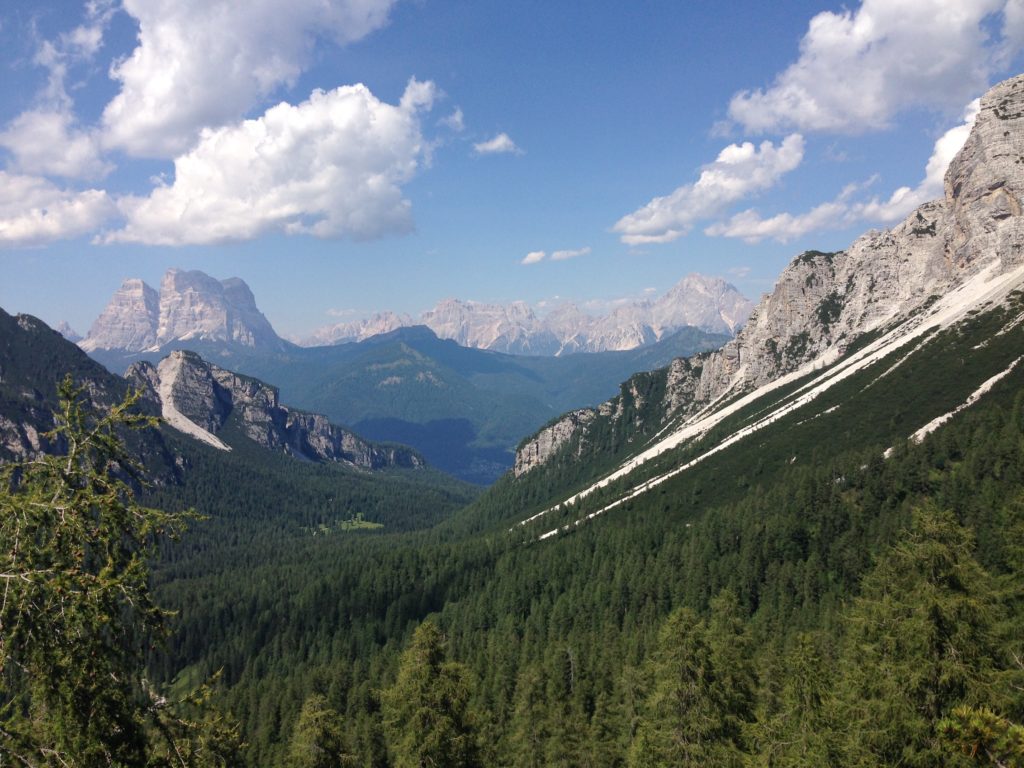
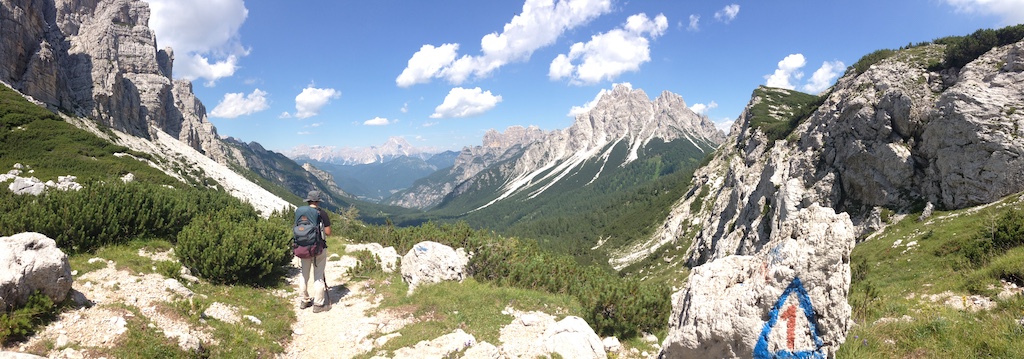

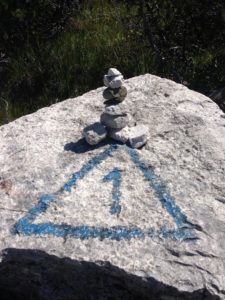




Well know bushwalking historian, rogainer and conservationist Andy Macqueen has been recognised with an O.A.M. in the latest Queen’s Birthday Honours list. It is great to see bushwalking being recognised.
Over many years Andy has been busy in so many ways from rewalking the routes of early European explorers (to determine where they really went) to weeding of invasive willow in remote sections of the Colo River Gorge to delving deep into NSW State Library archives to research the early history of bushwalking and Bushwalking NSW (BNSW). So, BNSW extends its congratulations to a past BNSW President.
In a way Andy is being honoured for being a bushwalker. While the O.A.M. newspaper citation is for “service to conservation and the environment” the full citation at the “Its an Honour” website lists –
# Foundation Member, Sea Spurge Remote Area Teams (SPRAT), since 2007.
# Foundation President, Friends of the Colo, since 2000.
# Member, Blue Mountains Regional Advisory Committee, National Parks and Wildlife Service.
These extraordinary activities are only possible by being a bushwalker. Hence, congratulations to Andy Macqueen for being a bushwalking conservationist.
The link below to the Blue Mountains Gazette has an excellent profile of Andy Macqueen O.A.M.
The history of Bush Search and Rescue NSW (BSAR) shows how remote area search and rescue in NSW has changed since 1936 when it was established as the “Search and Rescue Section of the NSW Federation of Bushwalking Clubs” (S&R). In 1936 a team of bushwalkers informally assisted NSW Police in the search for four young men missing in the Grose Valley. After this search Paddy Pallin, among others, approached NSW Police to formalise arrangements to assist NSW Police in the future.
The model of BSAR has always been to use bushwalkers skilled in remote area navigation to travel independently in National Park type country to aid NSW Police as required. Mostly, BSAR has been involved in searching for missing persons.
The first “Director” of S&R was Paddy Pallin (founder of the well-known bushwalking shop).
In these early days a telephone tree was used to contact bushwalkers as required. The S&R Committee would contact a particular “Club Phone Contact” to ‘callout’ club members. In the very early days search teams would travel by train to an incident.
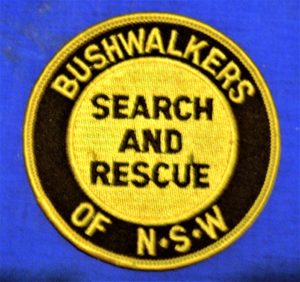
Sgt Ray Tyson of NSW Police Rescue Squad would often rely on S&R Secretary, Heather White (1959 – 1975) who he thought had an uncanny knowledge of the Blue Mountains.
The “Field Officer” is in control of S&R field operations. Ninian Melville was appointed as S&R Field Officer in 1961 and replaced Paddy as Director in 1970. Also, in May 1970 S&R joined the Volunteer Rescue Association of NSW (VRA) at their first Mid-Year Conference.
HF radio was introduced to S&R by Bob Mead during the 1960’s. Dick Smith, then a member of Sydney Bush Walkers, assisted in the purchase of the first generation of AM field radios. In 1979 the second generation of field radios moved to FM SSB. The ‘QMac’ fourth generation of field radio has given outstanding service for many years as smaller, lighter and more powerful than all previous radios. BSAR now uses a mix of VHF / UHF radios with these HF radios.
Robert Pallin, son of Paddy took over as Director in October 1971 when Ninian stood down. Vertical rescue for S&R at this time was done by members of the Sydney Rock Climbing Club (SRC) with Fergus Bell was the “Rock Rescue Officer”.
Fergus Bell worked closely with Robert until he became Director in September 1980. Later, in July 1984 the author moved from Field Officer to Director.
NavShield was set up in 1989 by Secretary, John Tonitto (1987 – 2012) so 2018 was the 30th NavShield.
A major change occurred in 2001 when S&R became a fixed membership squad since it was no longer acceptable to ‘just’ callout club bushwalkers. S&R incorporated as “Bushwalkers Wilderness Rescue Squad” (BWRS – later to become BSAR) to formalise its training and member skills through CBT (Competency Based Training). BWRS separated from “Federation” with the author its first President.
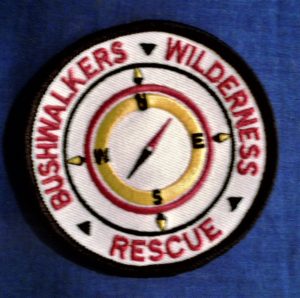
Overtime, remote area search and rescue has changed further. In 2018, after much consideration, BSAR reluctantly left the VRA and moved to NSW SES (from 1 May) as a better place to fulfil this role.
Within SES the most senior person in SES BSAR now is its Controller, currently Paul Campbell-Allen.
Since 1936 BSAR has been involved in many incidents occasionally multiday. Some high profile searches have included an injured person below Narrow Neck, near Katoomba (1949), schoolgirls Monica Schofield (1963) & Vicki Barton (1969), Scout Leader lost in the flooded Shoalhaven River (1977), Trudie Adams (1978 – see 2018 ABC TV investigation), three young men lost in Kangaroo Valley (1987), lost plane and pilots at Kanangra Walls (1993), lost plane in Barrington Tops (1981; an ongoing mystery), David Iredale, near Mt Solitary of the Blue Mtns (2006), deceased person on Mt Cloudmaker (2007 – see VRA Journal Volume 2.3) and Sevak Simonian at Kanangra Walls (2014)
Technology has improved outdoors safety. The latest field radios can give continuous GPS location of BSAR search teams. Mobile phones now have better coverage and distress beacons (PLB and EPIRB) can send an emergency signal far more quickly for a person in distress. However, many people don’t have access to these devices which are yet to be 100% effective. Experienced ground searchers like SES BSAR are still essential.
Further history of BSAR can be found in a Google drive folder at https://drive.google.com/drive/folders/1cSOMp9zsdYCFG7qbtHrrSQ2-i36U64Pz
Keith Maxwell
President BSAR
Ben Trewen attended the 2018 Bushwalking Australia Face-to-face conference for Walking SA and shared his thoughts on Youth & Youth Adult Engagement in clubs and outdoor adventure groups:
G’day all,
I was really encouraged by your recognition of and enthusiasm towards engaging young people within your states, so I have put some thought to some engagement ideas that you may wish to pursue.
To begin with, I think the challenge needs to be tackled by asking some key questions of your [clubs and] groups.
Is there actually an identified ‘young person’ problem? If so, what does this look like? (Remember, this is your problem, not theirs).
Are current members ready to engage with young people? (Doesn’t need to be a shift in your identity, but it does likely require a shift in attitude and/or culture).
Do young people wish to engage with your club/group? If yes – can you determine the barriers? If no – why not?
What is the incentive? What can you offer to a young person that others can’t? (You DO have a lot to offer!)
To help work through these questions, here are some ideas/strategies you might consider:
When it comes to implementing strategies as I discuss below… please don’t look to do what you think is best. Collaborate with young people on what IS best!
Keep in mind also, that engaging young people may take more give, than take (especially to begin with) – but in the long run, it can absolutely be worth it. Young people today may be different to you when you were their age, but they still have as much potential, value and ambition as you did/do!
Here we go:
Access to [Walks]/Hikes
Provide them with hike options to get them walking in their own time – an initial point of engagement. Ensure they are easy to understand and use (consider GPX files). I think we do this incredibly well at Walking SA through our website.
Duke of Edinburgh
Have members train and register as Duke of Ed Award Leaders, then offer to assess young people completing the award. I know in SA, there is a shortage of Award Leaders. I’ve trained as one – it’s not hard, an online course.
Subject Matter Experts
Offer your skill and experience to verify/assess a young persons ‘outdoor education’ learning – this can apply to high school students, TAFE students and uni students.
Diversity of Options
Offer a range of group hikes that are maybe more appealing within their ‘lifestyle’ – early morning, night hikes, school/uni holidays etc.
Networking
Looking beyond the outdoor recreational benefits. Many young people are looking for employment opportunities and maybe people in your clubs can offer this beyond the bushwalking experiences.
Mentoring
See bushwalking as more than just a recreational activity. It’s a chance for a young person to work on their wellbeing and mental health with the support (mentorship) of an older, experienced, patient and wiser person. A chance to have time and space to think, talk through challenges, breath in fresh air, de-stress… whatever it might be for them. This may not require a specific ‘program’, but just a consideration to the fact that a young person may get a different outcome from an experience to what you might typically consider. I have so many thoughts on this one because of my own experience.
‘Discount’ Incentives
Young people will typically be students, apprentices, trainees or on crap money. Any opportunity to reduce their financial burden will help. Discounts with retailers, concessions on membership fees, free entry to events/activities. The tight nature of their spending won’t last forever, but can be a great offset to begin with.
Leverage Relationships
Get involved with outdoor educators, Scouts groups and similar and piggy back of the introductory work they are already doing to introduce young people to outdoor recreation. Otherwise, you risk them becoming absorbed in mainstream sport (or no physical activity). Outdoor recreation has so many benefits on mainstream sports, the sell is easy (there was only so many Saturday’s I could handle being wasted away after being cleaned up for a duck). It’s making the connection between what their school (or similar) offers them for a week or two and the ongoing opportunity that is the challenge.
Up-skill/Formal Education
Seek opportunities to partner with local training bodies (RTOs or similar) and see if they’ll incorporate part of their course into your groups activities. For example, a learner has to lead one of your walks which can then be recorded in their training log.
Tech Engagement
Consider introducing more ’tech’ into your activities that would appeal. Thinking GPX files, Geocaching, Strava, Radio Communications etc.
Content
Let’s not rule out the appeal of young people keen to capture the ‘money shot’, write about their experiences on their blog, put together an adventurous clip from their GoPro or similar. If you can provide and facilitate opportunities to do this, it can then come full circle and benefit you. You may have just engaged your next marketing and communications person to take care of your website and social media. Who knows…?
Gear
Two thoughts on this one – the first one is the young people like me who froth on gear. Think ‘Geardos’. Provide opportunities for people to play with different types of gear, explore what’s new in the market, and share what the good ol’ days were like (before everything in a kit was made of titanium). The second one is to appeal to the reuse/recycle types. Consider gear swap nights, share information about ethical products and purchasing etc. Patagonia and North Face are two of many brands doing lots in this space.
I hope this has been of some help or inspiration (and these points can apply to all outdoor recreation including sea kayaking, not just bushwalking). Young people are just incredible (they always have been).
On reflection, I would love to help you and your state body, clubs, groups etc work through these present challenges, because I’m excited to think about the potential for when we can engage them. So please let me know if there is anything I can do.
To conclude, I’ll leave you with a some words from Patagonia founder, Yvon Chouinard – “The word adventure has gotten overused. For me, when everything goes wrong – that’s when adventure starts”.
Guest Blogger: Ben Trewren
Join Ben on his Churchill Fellowship travels for outdoor adventure: https://www.bentrewren.com/
You know those boot-cleaning stations at the start of iconic walks?
They help to stop the spread of diseases, particularly Phytophthora Cinnamomi, that can fell mighty big trees.
One of the walkers on my most recent walk almost felled me with this brilliant idea:
He brought along his own spray bottle to spray everyone’s boots at the start of the walk! A portable boot-cleaning station.
We all raised each foot behind us, like a horse being shod, and got a spray all over our soles.
And oh boy did my soul feel good to be walking so softly through that beautiful un-tracked rainforest!
This little trick is easy and cheap to do.
All you need is a spray bottle with either methylated spirits (70-100%), bleach (dilute to 25%) or F10 disinfectant solution.
Will you be the sole cleaner for the walks you lead or join?
You’ll be helping to preserve the beautiful places you visit, and probably also making some more souls feel good 🙂
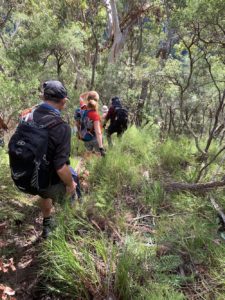
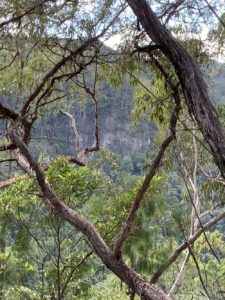
Happy, clean walking shoes at the iconic Protester Falls in northern NSW | Fellow walkers with clean boots | Beautiful Protester Falls country. Photos: Kirsten Mayer
A huge thank you to everyone who entered our photo competition – we have now reviewed the submissions, and we have a few shoutouts to make, as well as the announcement of the winners!
A big thank you to those who included shots of people bushwalking – we love nothing more than seeing you in nature. Additionally, we would like to make a very special mention to the below:
Our winners are:
3rd place: Peter Cai, Fortress Creek in the Blue Mountains
2nd place: Andrew Stanger, Kosciusko National Park
1st place: Ryan Hansen, Anvil Rock Lookout, Blue Mountains
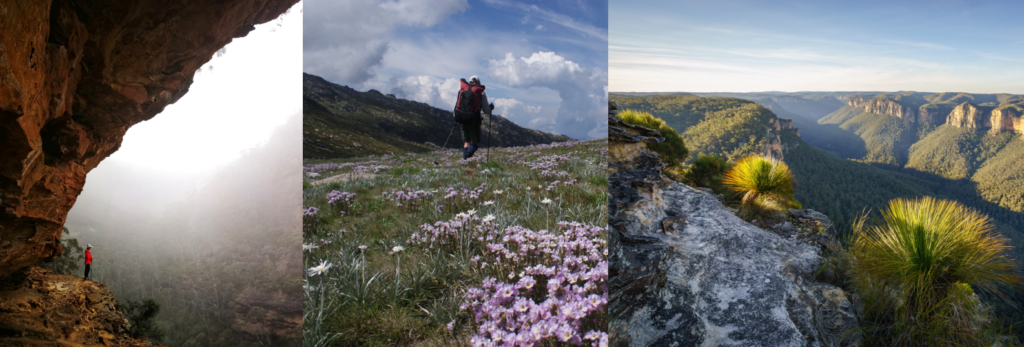
Congratulations to everyone!
Trek 100km along Victoria’s Great Ocean Road – join Diabetes NSW & ACT’s adventure of a lifetime!
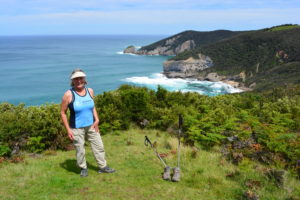
Trekking along the Great Ocean Road is a life changing experience you will never forget. Explore the diverse and inspiring landscapes as you are awe struck by lush rainforests, deserted beaches, majestic cliff faces and an abundance of local wildlife.
After receiving much positive feedback, the charity leading the adventure, Diabetes NSW & ACT, are very excited to roll it out again for 2019. Celebrating its fifth year this year, the trek covers 100km from Apollo Bay to the Twelve Apostles across Victoria’s rugged coastline. Lace up your hiking boots and join them for this seven day, 100km trek along the Great Ocean Road. Set yourself a challenge for fun, fitness and fundraising.
Gail Wright, North Rothbury, was motivated to take on the challenge in 2018. Describing it as one of the best experiences of her life, Gail shared with us a few highlights of the journey. “The views on the trek were phenomenal. Every time we walked a few kilometres the scenery would change, at one point we were trekking through a rainforest, the next through the bush, further along we would pass cliff faces and the ocean and at other times find ourselves amongst rich green rolling hills”, Gail says.
The day commences with breakfast at the award-winning Bimbi Park each morning and then a shuttle to the day’s starting point. Each day is approximately 20km with snack breaks, photo opportunities and lunch. Of an evening the team enjoys hot showers and hearty dinner back at Bimbi Park.
For many of the 2018 GORT team it was more than just spectacular views and physical endurance. It changed their life. As well as floods of memories, many walked away with the motivation to live beyond their comfort zone. The last day was described as “a rush of emotion and joy as we congratulated each other, we felt like a family”.
Participants recalled the enthusiasm from fellow trekkers sharing enthralling stories of what propelled them to get involved in GORT. As a fundraising event, it serves as an incredibly gratifying accomplishment. By taking on the challenge, vital funds are raised to help people living with diabetes.
“I’m happy with my efforts, the money raised, meeting fabulous people and my journey on the walk. Thank you for the opportunity to be involved.” says Gail. She added “ to anyone thinking of walking GORT 2019 I say have a go, you never know what you are capable of until you try!”
Best of all, by taking on the challenge, you will be helping people living with diabetes live a healthier, happier life every step of the way – what could be more fulfilling?
Don’t miss out, simply call 1300 342 238 or head to diabetesnsw.com.au/great-ocean-road-walk
This is a call to member clubs of Bushwalking NSW to nominate an outstanding bushwalker(s) from their club as a potential recipient of this special award of Bushwalking NSW. This award is intended to also raise the profile of that great outdoors activity; bushwalking.
The CHARDON AWARD is intended to recognise particular bushwalkers who have made an exceptional contribution to the bushwalking movement. It is named after Harold Chardon who was the foundation Secretary, in 1932, for “Federation” now known as Bushwalking NSW (BNSW).
CRITERIA: An award to a bushwalker who has made an outstanding contribution, over a number of years, to the NSW and ACT bushwalking movement; hence it must be more than service to just one club of Bushwalking NSW. Deceased members should not be excluded.
The award was first offered in 2017 to Dodie Green of Yarrawood Bushwalking Club and the late Wilf Hilder.
In 2018 the recipients were David Noble of Sydney University Bushwalking Club (SUBW) plus the late Gordon Lee.
NOMINATIONS: Please forward the nomination from your Club for the Chardon Award to the President of Bushwalking NSW, Alex Allchin at president@bushwalkingnsw.org.au
Keith Maxwell.
By Janine Kitson
In December 2018 unionists and environmentalists came together to celebrate Joyce Moffitt (1930-1999) and Vern Moffitt (1924-2001) past members of the NPA who were pivotal in establishing NPA’s Bathurst Branch.
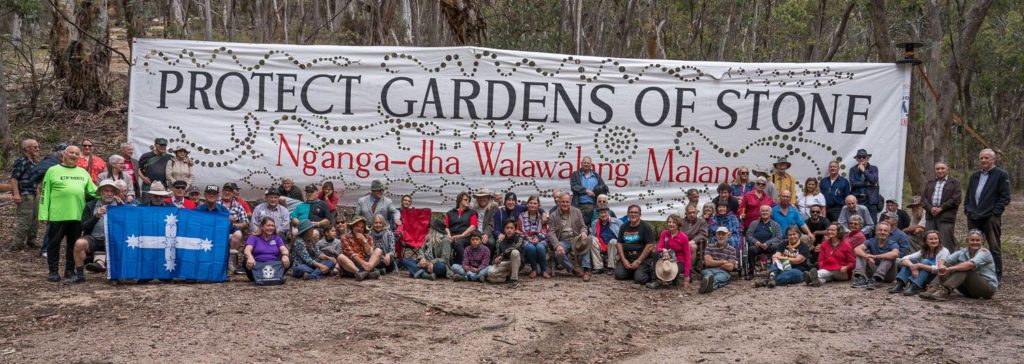
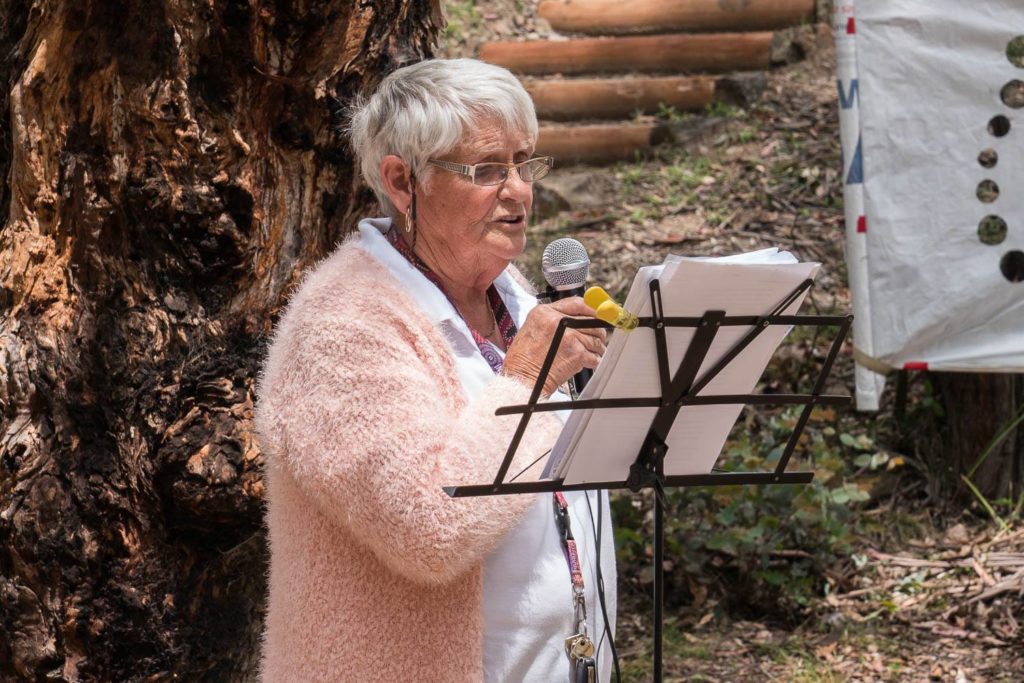
The Combined Retired Union Members Association (CRUMA) and the Gardens of Stone Alliance celebrated the installation of the NPWS ‘Moffitts Pagodas’ and highlighted how a Gardens of Stone Stage 2 State Conservation Area would be a win-win for Lithgow workers as it permits the continuation of underground mining; would create a new vibrant tourist economy and protect Lithgow’s internationally significant pagodas and threatened upland swamps; and would protect Lithgow’s internationally significant pagodas and threatened upland swamps.
Retired unionists travelled to Lithgow by train to celebrate the environmental achievements of NPA members Joyce and Vern Moffitt, who were pivotal in establishing the NPA’s Bathurst Branch, in December 2018.
Joyce and Vern Moffitt played a significant role in founding the Lithgow-Bathurst environment movement. Joyce and Vern were founding members of NPA’s Central West Branch, the Bathurst Conservation Group and Central West Environment Council. When Joyce was the Vice President of the Bathurst Conservation Group she wrote submissions opposing underground coal mining on the Newnes Plateau and highlighted the need to protect its rare and endangered Bathurst copper butterfly Paralucia spinifera and upland swamps.
Legendary Combined Retired Union Members Association (CRUMA) member Jack Mundey, former Green Bans BLF (Builders Labourers Federation) Secretary and union champion who saved so much of Sydney’s environment and heritage in the 1970s joined the CRUMA’s delegation to Lithgow in support for the Gardens of Stone Stage 2 Reserve Proposal.
On arrival at Lithgow Railway Station unions and environmentalists marched down the main street of Lithgow carrying their placards, followed by a bite to eat at Lithgow’s Tin Shed Café. There up to 70 other environmentalists, community members, and even the odd coal miner met and listened to speeches that included Aunty Helen Riley, Wiradjuri Elder; David Shoebridge, Greens MLC; Councillor Wayne McAndrew, Lithgow Deputy Mayor; John Koch, Mick Tubbs and Terry Relph, union Elders; and Kathryn Newton, Lithgow Branch of the National Trust.
Former Blue Mountains Mayor Jim Angel, good friend of Joyce and Vern Moffitt, recounted how Joyce and Vern were passionate about protecting the Gardens of Stone and how the celebration was “long overdue”.
Due to difficulties in accessing the ‘Moffitts Pagodas’ NPWS sign in the Gardens of Stone National Park, a replica sign was ‘unveiled’ at Maiyingu Marragu Aboriginal Place.
Newnes Hotel Cabins’ Thomas Ebersoll generously donated the funds to hire a Lithgow Buslines coach to transport the retired unionists to Maiyingu Marragu Aboriginal Place.
Once at Maiyingu Marragu guests enjoyed seeing two impressive 30 metre banners written in Wiradjuri – Nganga-dha walawalag Malang – meaning “Respect for Country and People”.
More speeches were held again at Maiyingu Marragu Aboriginal Place again starting with Aunty Helen Riley, Wiradjuri Elder; followed by Jim Angel, former Blue Mountains Mayor; Bob Debus, former Member for Blue Mountains; and Keith Muir, well respected and long time campaigner for the Gardens of Stone who said that nothing in the Gardens of Stone reserve proposal would threaten Lithgow’s economy and that in time Lithgow would become the new Katoomba.
The replica ‘Moffitts Pagoda’ sign was proudly unveiled by the Moffitt family.
Peter Drinkall, Lithgow poet opened the Maiyingu Marragu ceremony with his song ‘Gardens of Stone’ and then finished the ceremony with his beautiful song ‘Maiyingu Marragu’. Then Aunty Helen invited guests to walk up some steps to see the Wiradjuri people’s treasured, sacred and spectacularly beautiful rock art but to make sure, before their ascent to leave any negativity behind.
Then the retired unionists and guests reboarded the ‘Ebersoll bus’ and headed to the Clwyd of Vale Club where the Vale Ladies Club served a delicious, old fashioned afternoon tea with homemade sandwiches, cakes, slices and plenty of cups of tea. Speeches were made again beginning with the Moffitts’ sons – Michael and Robert – who shared stories of their parents. Michael eloquently described the danger of disunity between workers and environmentalists. Corporations that destroy workers’ rights also destroy environmental rights.
Trish Doyle, MP, Member for Blue Mountains, joined the afternoon tea and acknowledged the important work that unionists past and present had done building positive and constructive bridges between unionists and other environmentalists.
Trish Doyle finished with graciously announcing the winners of the first ever ‘Gingerbread-Pagoda-Houses’ that Retired CFMEU Clelia Koch had spent weeks in the kitchen preparing. Further raffle prizes were donations of a NSW Parliamentary Pack of Wine, overnight accommodation at the Newnes Hotel Cabins and the Fat Wombat Farm Bed & Breakfast.
Returning to the Lithgow railway station, the Lithgow Community Choir farewelled the unionists with songs of coal miners before the train whistle blew telling everyone to board the train.
CRUMA plans to hold a future event in 2019 to celebrate NPA’s Moffitts with the installation of a plaque that highlights their commitment to both Lithgow’s workers and Lithgow’s Gardens of Stone.
Should a small battery tester be considered an essential item of bushwalking equipment? Modern LED torches just keep getting better and better. Battery technology has also gone forward in leaps and bounds with various types that seem to last forever and ever – “best before 20xx”.
My first bushwalking torches used incandescent light bulbs that were miniature versions of house light globes. Like house globes, torch globes had a limited life span so the folklore was always to carry a spare globe. But LED lights are so much brighter from a lamp with an almost infinite life span plus they keep getting better and better. A little while ago the switch on a 100 Lumen head torch failed. The replacement torch under warranty was 160 Lumens. Same model just a few months apart.
Our early torch batteries were the ‘red’ carbon batteries. The Zinc case formed part of the electrical reaction. They would self-discharge in a short time (go flat) often leaving a corrosive mess. The batteries were not very powerful so torches had to be big to hold “C” or “D” (large batteries). Now, alkaline “AA” and “AAA” batteries can be purchased in multi packs. Even better types of battery are available or your choice of rechargeable battery.
Thus, it is easy to keep a light, compact, bright headlight torch that uses small “AAA” batteries at the bottom of the day pack ‘just in case’ – no wandering in the dark from an unexpected delay.
However, since batteries last so long it is easy to forget to check them. Most LED torches have a system of still giving out light as the batteries progressively fail. Corrosion can still eventually happen. So, you turn on your torch in a bright room and you have light but how good is it really?
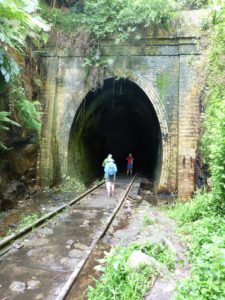 Such a torch let us down recently at a disused, open access railway tunnel at Helensburgh. This amazing long single-track tunnel was brick lined for reinforcement. The current double track railway through the mountainous terrain has by passed this tunnel. It was dark enough to have impressive glow worms.
Such a torch let us down recently at a disused, open access railway tunnel at Helensburgh. This amazing long single-track tunnel was brick lined for reinforcement. The current double track railway through the mountainous terrain has by passed this tunnel. It was dark enough to have impressive glow worms.
Fortunately, a dud torch was not a problem as our group had all taken spare torches. Later at home, I found corrosion had started on one battery. My battery tester indicated that the other batteries were also on the way out.
When did you last properly check your emergency torch? Importantly, when will be your next check? Over time I have seen a range of different battery testers with one thing in common. They were all cheap. There is no reason not to have a battery tester so you can be sure your emergency torch won’t let you down.
Keith Maxwell.
